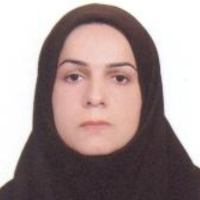Antioxidant and antibacterial activities of the polysaccharides extracted from Chlorella vulgaris in vitro
Chlorella vulgaris is a freshwater green microalgae, which is a rich source of novel structural and biologically active metabolites. In this research, the extraction of Chlorella vulgaris polysaccharides was done by hot water method and the crude polysaccharide yield was approximately 5% of dry weight. Antioxidant activity of the polysaccharide extracted by the methods of inhibiting 2, 2-diphenyl-1-picrylhydrazyl radicals (DPPH) and reducing power in 5 concentrations (0.375, 0.75, 1.5, 3 and 6 mg/ml) was investigated. The obtained polysaccharides had antioxidant activity. The highest DPPH inhibition activity was 15.91% at 6 mg/ml and the highest reducing power was 0.781 at 6 mg/ml (absorbance at 600 nm). DPPH free radical inhibition and BHA reduction power at the concentration of 0.031 mg/ml were 39.78% and 3.65, respectively. The value of IC50 for DPPH free radical inhibition and reducing power of Chlorella vulgaris polysaccharides was 22.342 and 45.79, respectively. Also, the polysaccharide of Chlorella vulgaris had an inhibitory effect of 21% on E. coli compared to the control culture after 18 hours of incubation. C. vulgaris microalgae polysaccharides contain a wide range of bioactive compounds, in food supplements they will be an effective mediator in scavenging free radicals and have the potential to be created as natural antioxidants for use in food and medicine industries.
-
Study of the antiviral activity of bioactive peptides extracted from black sea cucumber (Holothuria leucospilota) against Herpes simplex (types 1 and 2), Chikungunya, and Dengue viruses
Reza Safari*, , Hadi Ghaffari, Soheyl Reyhani Poul
Iranian Scientific Fisheries Journal, -
Evaluation of indicator bacteria distribution in the headwaters of the Qeshlaq and Gawh Roud rivers of the Javah dam in Kurdistan Province
Reza Safari*,
Iranian Scientific Fisheries Journal,


